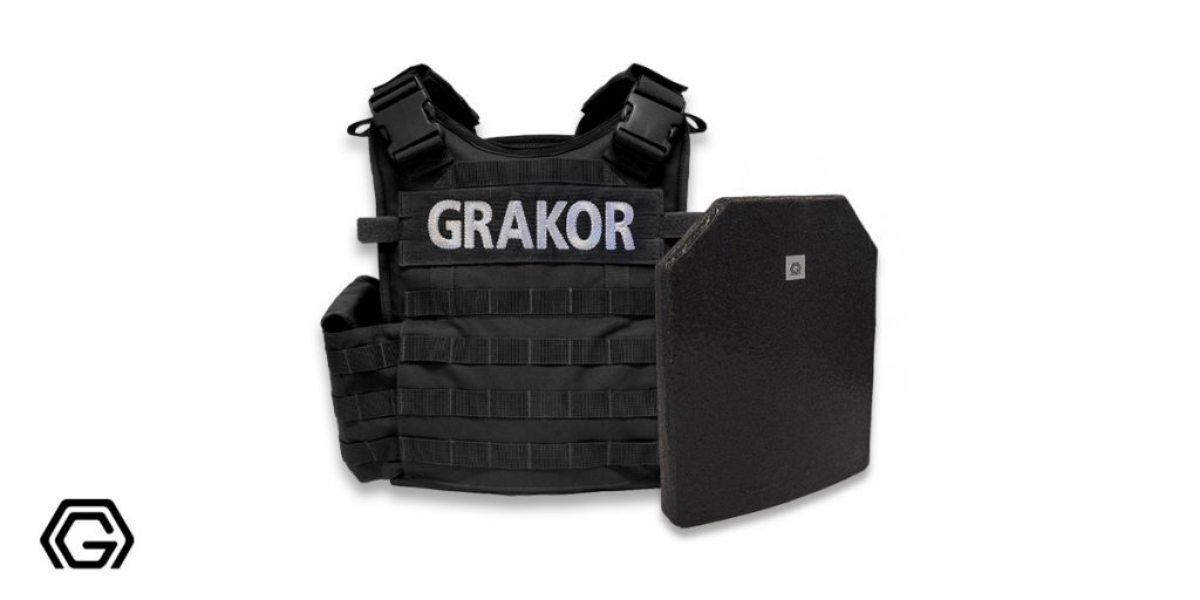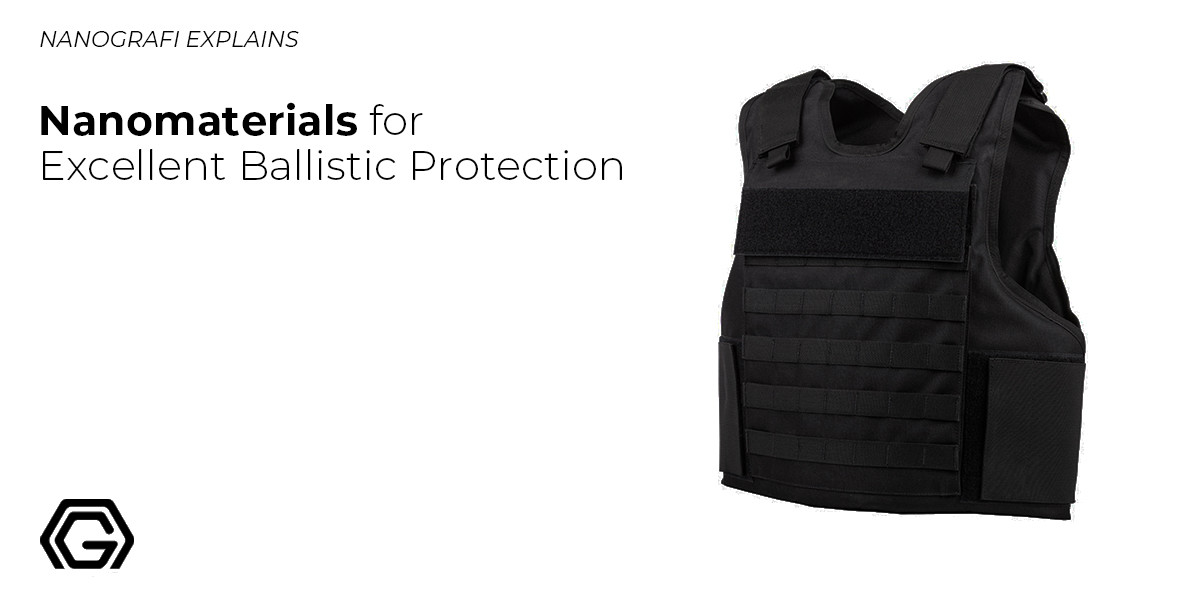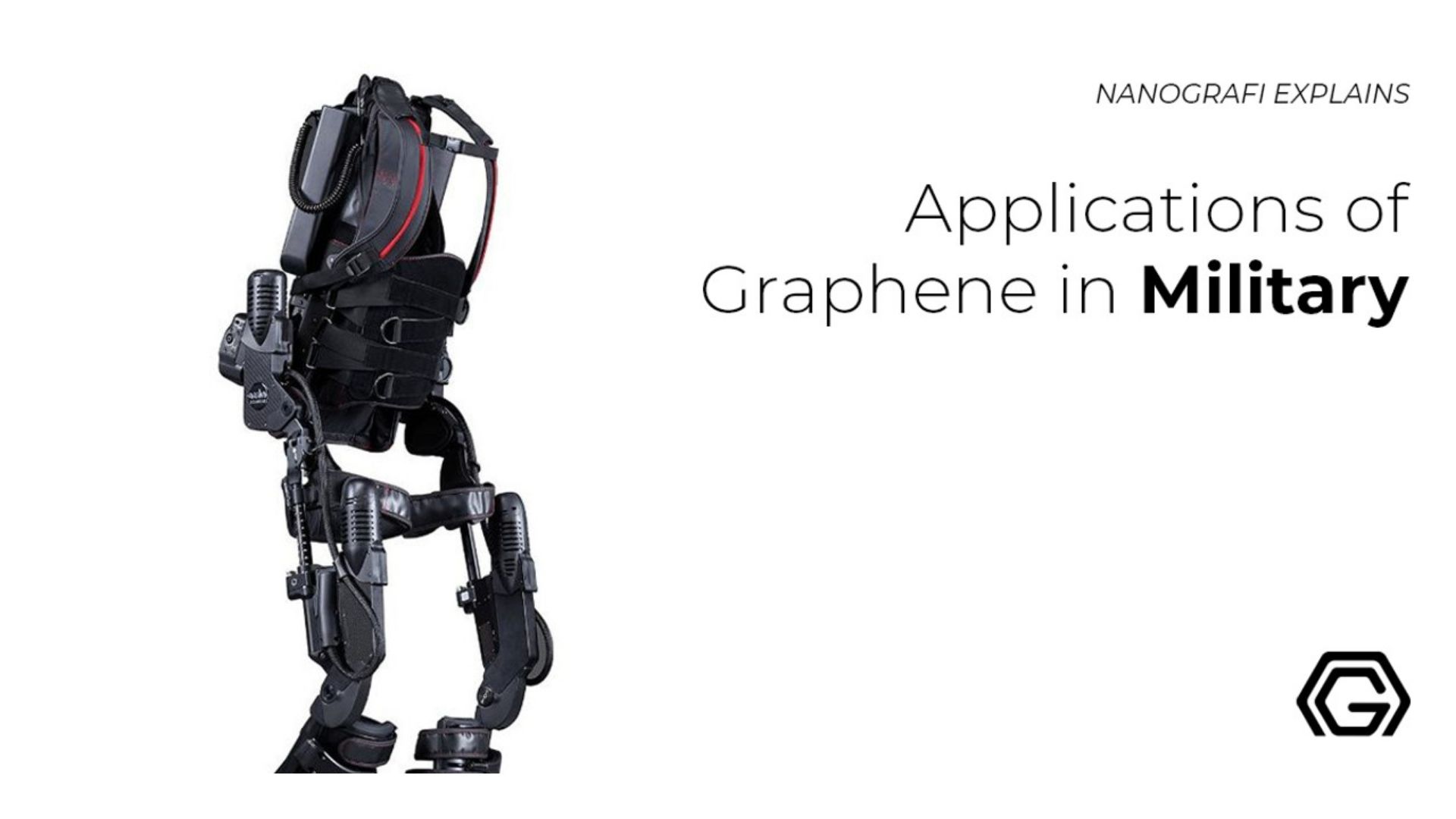Nanomaterials for Excellent Ballistic Protection
Nanomaterials are a unique type of materials that are insanely small in size that they are impossible to be observed via naked eye.
Though being small in size but their properties and characteristics make them much more unique and portray them as one of the best materials in the market. There is no doubt in this because their applications and now rapid usage is livingproof of their authenticity and remarkability. Out of all the other applications and uses of nanomaterials, ballistic protection is one of the most prominent ones. A detailed set of performances go into this task and as a result, a great outcome is obtained.
Introduction
Nanomaterials are the materials of a single unit small-sized between 1-100 nm. A materials science-based approach to nanotechnology is taken by the nanomaterials research, leveraging the advances in the synthesis and metrology of materials, which have been made for supporting microfabrication research. At the nanoscale, the structured materials have remarkable mechanical, electronic, or optical characteristics. Slowly and gradually, nanomaterials are being commercialized and emerging as commodities.
A material having a surface structure or an internal structure in the nanoscale, or with an external dimension is known as a Nanomaterial. The range of length from 1nm-100nm is known as nanoscale. Nano-objects and nanostructured materials are both included in this. The material's discrete pieces are known as the nano-objects, and the nanostructured materials have a surface or an internal structure on the nanoscale. Both these categories have one similar member, a nanomaterial.
In 2011, definition of nanomaterial was adopted by the European Commission which states that a manufactured, incidental, or natural material having particles, as agglomerate or as aggregate or in an unbound state. In some particular scenarios, a threshold of 1% to 50% can replace the number size distribution threshold of 50%.
Properties of Nanomaterials
Remarkable chemical and physical characteristics are possessed by nanomaterials. As compared to the bulk component, the nanoparticle's chemical, optical, and electrical characteristics are very dissimilar. Materials work differently at the nanoscale than at the larger scales. Predicting the chemical and physical characteristics of the particles is still difficult due to their extremely small size.
Inner structure, surface properties, size, and shape are the nanomaterial's principal parameters. They are seen as emulsions (liquids in liquids), suspensions (solids in liquids), or aerosols (liquids or solids in the air). The nanoparticle's characteristics are enhanced in some specific chemical's presence.
Some nanoparticles have a very complex composition as they have various interactions with other particles or chemicals. The lifetime of the particle also determines the complexity of the composition. On the nanomaterial's surface, different chemical processes take place, which are very complex and unknown.
Nanomaterials interact with each other in various ways. The repulsive or attractive interaction forces between them determine whether they remain free or join together. Characterizing those interactions is a difficult task. As compared to in liquid state, the suspended nanomaterials in the gaseous state tend to stick more to each other.
Nanomaterials for Ballistic Protection
Either in rigid or soft forms, textile fabrics are used against stab and ballistic threats for equipment and personal protection. The features of the performance that are required being low cost, comfortable, stabbing/high ballistic performance, and lightweight. These requirements can be fulfilled by using high-performance matrices/fibers, and textile structures that are layered, for instance, three-dimensional (3D) and two-dimensional (2D) preforms. Ballistic performance is capable of being improved by using specialized nanomaterials. An applied physics branch, ballistic, deals with the projectile's motion propelled by different energy sources, for instance, gas/liquid/solid propellant or the latest light/electromagnetic/electrical sources. Usually, the ballistics field is further classified into four branches.
Thermodynamic Processing
During material combustion and gas propagation in the rocket or gun, thermodynamic processing occurs which is dealt with by these interior ballistics. When the rocket is launched, the rocket or projectile's behavior is the concern of intermediate ballistics. After being launched, the projectile or missile's motion is the concern of exterior ballistics. When the missile reaches its targets, its effects are described by the terminal and projectile ballistics, also, the relationship between the target and projectile, including the momentum equilibrium and impulse is explained. To protect themselves from enemies, humans have utilized different materials in the past, for instance, stone, metal shields, wood, and animal skin.
Usage of Soft Vests and Rigid Plates
Law enforcement officers and military personnel are using rigid plates and soft vests today. Generally, soft vests are woven fabrics, made-up of fibers of high modulus/strength, however, the rigid plates are ceramic-made mostly. The level of threat determines that for protecting the human body parts, these two types of material can be combined. Knitted fabrics and 2D woven are made for soft vest ballistic/stab structures by using high-strength/modulus polymer fibers, for instance, para-aramid and polyethylene. Structures of different thicknesses can be designed with multiple 2D woven fabrics. These layered structures can be alternatively stitched for improving the stabbing resistance and ballistic, specifically by lessening the back face deformation.

Elastomers Coating
Elastomers coat the 2D woven fabrics for enhancing the structure's fracture toughness. Meanwhile, para-aramid fabric shows resistance to stabbing/ballistic penetration and turns more flexible when impregnated with the shear-thickening fluid. The fluid consists of nano-silica particles dispersed in ethylene glycol. Soft vests, made of knitted preforms, multiaxis 3D woven, 3D partly/fully interlaced woven, 3D angle interlock woven, and 3D orthogonal woven are used to protect against threats of slashing/stabbing/projectile types. Through the usage of multi-layer and single-layered braided and nonwoven structures, hybrid 3D/2D vest structures, based on the fabric can be made.
Factors Influencing Ballistic Performance
Soft vests' stab/ballistic performance can be influenced by some factors, including, layer sequences, number of layers, surface treatments, fabric structure, yarn/fiber characteristics, projectile/sharp object geometry, their fabric-projectile, velocities, yarn–yarn frictions, and far-field boundary conditions. Fabric failure occurs on a macro-scale as in-plane and out-of-plane directional bending, which results in back-face deformation. Local shearing results due to pure shear deformation, then the local wrinkles are developed, and there is internal yarn-to-yarn friction in the structure of the fabric.
To find out more, you can read Applications of graphene in military.
Failure of Meso-level
Remote yarn failure, local complete/partial yarn rupture, fabric layer sliding, local frictional intra-yarn slippage, and yarn crimp stick-slip/pull-out/removal are included in the Meso-level failure. Upon stabbing/penetration, micro-level failure results in filament shearing/fibrillation, and multiple filament breakages. One significant parameter is the soft vest's fabric stiffness as it affects the comfort and maneuverability of the wearer. The fabric finish, fabric structure, amount of layers, yarn/fiber characteristics, and the additional processes determine the fabric's bending behavior. Fabric's flexural rigidity is affected by the additional processes, for instance, stitching, and nano-treatment.
Nano Additives for Ballistic Protection
Fullerenes, also referred to as Carbon nanospheres, consist of atoms of carbon, forming faces of pentagon and hexagon, meanwhile, the shape of the carbon nanotubes (CNTs) is cylindrical, and carbon atoms are arranged, hexagonally. A graphite sheet rolled in a tube is a carbon nanotube (CNT), with each atom of carbon, having three closest neighbors. CNTs can either be multi-walled or single-walled. In multi-walled CNTs, concentric single-walled nanotubes are present. Currently, at many state and private universities and research centers, continuous and short carbon nanofibers are under investigation.
Applications and Properties of Nanomaterials for Ballistic Protection
Also, in the structure of the soft vest, the nano additive's properties and applications were discussed under ''Impact properties of fabrics and composite structures'' and ''Shear thickening fluid fabrics (STF)''. Two methods are used for synthesizing the carbon nanospheres, the combustion method, and the arc method. For multi-walled and single-walled nanotubes, the methods of production are CVD through hydrocarbon usage, gas-phase catalytic growth from carbon monoxide, laser ablation, and arc discharge. The vapor-grown techniques are used to make short and continuous carbon nanofibers. In this, the carbon nanofiber is made by pyrolysis of carbon monoxide or hydrocarbon (acetylene) on a metal catalyst, for instance, iron. The production of nanoparticles of iron catalyst is done by organometallic compounds' pyrolysis, for instance, iron pentacarbonyl and ferrocene. The conditions of operation, activity and size of the catalysts determine the thickness of the fiber.
Spinning Techniques
Staple nano yarns and short nanofibers are made by utilizing the techniques of spinning. Spinning the carbon nanotube fibers from the nanotube's liquid crystalline suspension was the first method. In another method, the production of gas-phase aerogel of SWCNTs through the process of CVD is involved. The fibers of the carbon nanotube were then spun directly from the single-walled nanotube aerogel. For making nanofiber yarns, one of the methods is the twisting of multi-walled carbon nanotubes and simultaneous spinning. Also, for synthesizing nanofiber webs, another efficient and effective method is the electro-spinning method. The nanoweb is changed into staple nano yarns after its fabrication, by continuous twisting or/and condensation.
Fibers for Ballistic Protection
For making fabrics that show resistance to impact, the fibers of high-strength/modulus have been used. Such fabrics are utilized in different applications, for instance, protective layering in helicopter and aircraft components, protective clothing for law enforcement and military personnel, electronic parts, honeycomb sandwich constructions, and vehicle armor plating. Extremely high modulus and high strength are possessed by the para-aramid fiber. At high temperatures, it turns black but doesn't melt.
Aramids
Despite being sensitive to ultraviolet light, low affinity for water is possessed by aramids. Commercially, the first-ever para-aramid fiber that's produced was Kevlar (DuPont). Twaron (Teijin) is a poly para-phenylene-terephthalate (PPTA) fiber type. Good abrasion and flexural resistance, high melting point, and low creep are possessed by Technora (Teijin). Due to resistance to flexural fatigue, and its high flexibility, a huge amount of energy can be absorbed by ultra-high modulus polyethylene fibers (UHMP).
Ceramic Fibers
Ceramic fiber is utilized in rocket industries and aerospace as such areas require high thermos-mechanical performance and are resistant to high temperatures. Generally, alumina (aluminum oxide) and silica carbide are the two considered forms. Boron and metallic fibers are the more special fibers.
Conclusion
It is the hour of need that a wide range of interest and work can be invested in ballistic protection and for this purpose nanomaterials have come forward and offered their role in it. Nanomaterials through their authenticity and remarkability have paved their way in the field of ballistic protection and are reaching new heights. This is undoubtedly one of the best performances by nanomaterials.
To discover the latest articles in nanomaterials, you can visit Blografi.
References
Applications of Graphene in Military - Nanografi Nano Technology. (n.d.). Retrieved April 19, 2024, from https://nanografi.com/blog/applications-of-graphene-in-military/
Chemical Vapor Deposition CVD Graphene - Nanografi Nano Technology. (n.d.). Retrieved April 19, 2024, from https://nanografi.com/blog/chemical-vapor-deposition-cvd-graphene/
Chemicals - European Commission. (n.d.). Retrieved April 19, 2024, from https://environment.ec.europa.eu/topics/chemicals_en
Nanomaterials - Wikipedia. (n.d.). Retrieved April 19, 2024, from https://en.wikipedia.org/wiki/Nanomaterials
Nanotechnologies: 3. What are the physical and chemical properties of nanoparticles? (n.d.). Retrieved April 19, 2024, from https://ec.europa.eu/health/scientific_committees/opinions_layman/en/nanotechnologies/l-2/3-nanoparticle-properties.htm
Nanotechnology and Nanomaterials for Camouflage and Stealth Applications - Nanografi Nano Technology. (n.d.). Retrieved April 19, 2024, from https://nanografi.com/blog/nanotechnology-and-nanomaterials-for-camouflage-and-stealth-applications/
Recent Posts
-
Advanced Materials for Unmanned Aerial Vehicle (UAV) Protection Against Laser
Consider a UAV on a critical mission, rendered inoperative by a sudden laser attack. With the increa …26th Jul 2024 -
Simulation and Modeling of Material Properties
Our world is composed of a dazzling array of materials, each with its own unique properties that dic …19th Jul 2024 -
Advanced Coatings for Superior Corrosion and Wear Resistance
Corrosion and wear pose significant challenges across various industries, leading to substantial eco …12th Jul 2024







